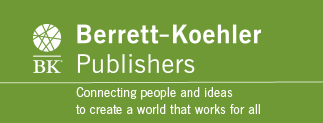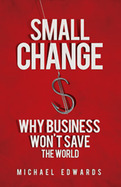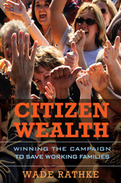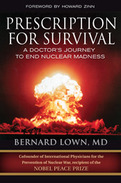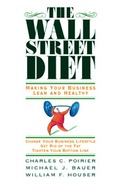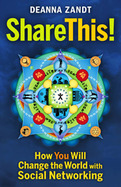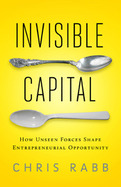2010
2009
• By the founder of ACORN, the nation’s largest grassroots community organization of low- and moderate-income people
• Goes beyond piecemeal solutions to present a holistic strategy for helping working people establish a solid economic foundation
• Draws on lessons learned from Rathke’s 40 years in the field
America’s safety net is torn and tattered. Income inequality continues to grow—the gap between rich and poor has expanded fivefold in the last 25 years. For millions of working families achieving basic middle class comforts has begun to seem as distant a dream as winning the lottery. What is needed, and what veteran organizer and ACORN founder Wade Rathke provides in this hard-hitting new book, is a comprehensive grassroots strategy to create what he calls citizen wealth: an enduring foundation on which working people can build a future that extends beyond paying next month’s rent.
Rathke shares breakthrough strategies that have enabled ACORN and other organizations help people secure the basics of citizen wealth—a house and a decent income—offering from-the-trenches advice on mounting successful living wage campaigns, battling unscrupulous and predatory lending practices, and developing new forms of worker organizations to protect wages and benefits. The anti-poverty programs still out there can provide critical support for citizen wealth-building efforts, but they’re woefully underutilized. Rathke shows how to cut through government indifference and bureaucratic obstacles to provide those in need with access to these vital resources.
But community organizations can’t do it alone. Rathke describes ACORN partnerships with HSBC Bank and H & R Block that helped these businesses see building citizen wealth as a new market opportunity—a win for them and for the people they once exploited. And he looks at other examples of strange bedfellows in the fight for citizen wealth, including Citibank, once the target of massive protests by ACORN and now, working with them, a major investor in working class communities.
“We need to create a national economic and political consensus that increasing family income, wealth and assets is not `welfare’ or an entitlement ‘give-away” program but an investment in the public good and well-being.” Rathke writes. Based on forty years of hard-won experience, Wade Rathke offers a new blueprint for helping millions to achieve the American Dream.
· A dramatic memoir by a Nobel Prize winner and medical pioneer
· Shows that the nuclear threat, which is still very much with us, can be successfully opposed by citizen action
· Analyzes what really drove the Cold War and what continues to drive nuclear proliferation today
“How close we came to extinction, and it is forgotten now.” So begins Nobel Prize-winner Bernard Lown’s story of his fight against the nuclear symptom of what he calls “the disease of militarism.” It is still active and highly contagious, as witnessed by events in Iran, North Korea, Pakistan, and all too many other places. And it can only be stopped, as this extraordinary memoir vividly demonstrates, by concerned citizens working together.
In 1981, brimming with anxiety about the escalating nuclear confrontation with the Russians, Lown launched a USA-USSR antinuclear movement with Soviet cardiologist Evgeni Chazov: The International Physicians for the Prevention of Nuclear War (IPPNW). Over the next four years Lown and Chazov recruited more than 150,000 doctors worldwide to join their movement, held international conferences that included U. S. and Russian military leaders, met with numerous world political leaders, and appeared on television programs broadcast throughout the USSR and the U. S. In 1985, despite active opposition from the U. S. government and NATO, Lown and Chazov accepted the Nobel Peace Prize on behalf of IPPNW.
This dramatic story is told with a vibrancy of language that illuminates dramatic scenes such as Lown convincing King Hussein of Jordan to join the anti-nuclear struggle during a medical exam, the heart attack of a Russian journalist at an IPPNW press conference, and Lown’s face-to-face conversations with Gorbachev. Although this book is concerned with a potential clash of superpowers, Lown writes, “At the heart of these cascading events is a human narrative.”
“Historical amnesia is a prelude for repeated victimization,” Lown says. Prescription for Survival probes the past to help us understand what drove, and continues to drive, nuclear proliferation, and offers a blueprint showing how we can join together across national boundaries to end it.
2006
Businesses trying to stay lean and fit face the same challenges as human dieters--success requires fundamental lifestyle changes and sustained, continuing effort. And, like human dieters, businesses, too, are susceptible to the come-ons of the latest quick-fix fads, which often deliver short-term gains but fall short in the long run. Eventually they go back to their old habits and they're right back where they started. It's a vicious cycle.
The Wall Street Diet uses a diet metaphor to illustrate a complete, integrated approach to what every business must do to become a lean, healthy enterprise. Like a truly effective weight loss program, it is a plan for achieving sustained benefits--following the Wall Street Diet will add five to eight points of potential new profit to a business's bottom line.
Using the proven concept of total enterprise optimization (TEO) as a framework, the book introduces a fitness program that brings together lean techniques, advanced supply chain management, improved quality concepts, selective outsourcing, and a focus on both the top and bottom lines. The authors detail specific TEO efforts that add savings and create new values, demonstrating the synergy to be had by combining those efforts with improved consumption data and analysis and innovative partnering with allied businesses. Fundamentally, The Wall Street Diet is about changing the culture that drives the business, leading to better earnings, continued growth, and the greatest value for all stakeholders.
- Uses a unique diet metaphor to show businesses how to change their lifestyles and become lean, efficient enterprises
- Offers a comprehensive approach to business growth that ties together a broad spectrum of business practices into one synergistic fitness program
- Includes checklists for senior managers and functional managers and "diet champions" so everyone can chart their progress in implementing the Wall Street Diet
2010
Shows how we can join the conversation online and share our stories to help make the world a better place.
- Shows how both activists and the casually progressive can leverage the power of social networks for social change
- Helps readers maintain credibility, establish new connections, deal with common fears, and have a good time
- Authoritative but aggressively non-technical-like talking to a real person with a great sense of humor who really knows her stuff
Social networks can be so much more than a way to find your high school friends or learn what your favorite celebrity had for breakfast. They can be powerful tools for changing the world. With Share This! both regular folks of a progressive bent and committed activists can learn how to go beyond swapping movie reviews and vacation photos (not that there's anything wrong with that).
At the moment the same kinds of people who dominate the dialog off-line are dominating it online, and things will never change if that doesn't change. Progressives need to get on social networks and share their stories, join conversations, connect with others-and not just others exactly like themselves. It's vital to reach out across all those ethnic/gender/preference/class/age lines that exist even within the progressive camp. As Deanna Zandt puts it, "creating a just society is sort of like the evolution of the species-if you have a bunch of the same DNA mixing together the species mutates poorly and eventually dies off."
But there are definitely dos and don'ts. Zandt delves into exactly what people are and are not looking for in online exchanges. How to be a good guest. What to share. Why authenticity is more important than just about anything, including traditional notions of expertise or authority. She addresses some common fears, like worrying about giving too much about yourself away, blurring the lines between your professional and personal life, or getting buried under a steaming heap of information overload. And she offers detailed, nuts-and bolts "how to get started" advice for both individuals and organizations.
The Internet is upending hierarchies and freeing the flow of information in a way that makes the invention of the printing press seem like an historical footnote. Share This! shows how to take advantage of this unprecedented opportunity to make marginalized voices heard and support real, fundamental change-and, incidentally, have some fun doing it.
2009
-
Reveals the true landscape of opportunity and the hidden assets entrepreneurs benefit from that improve business viability
-
Shows how this "invisible capital" tilts an already uneven playing field
-
Offers solutions that empower individuals and communities by democratizing entrepreneurial opportunity
We have been sold a bill of goods: all it takes to succeed in business is a great idea, a good attitude, and hard work. But a slew of government data tells quite a different story: the chances that a newly minted entrepreneur will build a business that survives five years, employs twenty workers and generates significant profit is about 1 in 1,000! The 999 entrepreneurs who didn't make it failed not because they "didn't want it badly enough." All too often it was due to a lack of invisible capital -- the intangible assets that play a crucial role in business success.
Invisible capital is not any one thing. It's a complex set of factors: our skills, knowledge, networks, resources, and experiences. These can create significant advantages, even if they are not consciously exploited. Rabb details how people can evaluate the components of their own invisible capital and develop a plan to build on strengths and mitigate weaknesses. He draws on his extensive experience as an entrepreneur, his tenure on Capitol Hill and the White House Conference on Small Business, his experience managing an urban business incubator, and his involvement with numerous family-owned businesses.
A major reason invisible capital is so little known is what Rabb calls the "entrepreneurial-industrial complex" -- influential pro-entrepreneurship boosters who cynically spoon-feed misinformation to the public. Rabb exposes how their misguided efforts perpetuate mythic "rags to riches" notions and illuminates research -- which is rarely shared and often politically manipulated -- confirming the significant influence of invisible capital on business outcomes. Rabb also outtlines how society can both help individuals build invisible capital and support the common good by investing in sustainable, community-based business models.
Understanding invisible capital will enable more Americans to be better prepared to pursue entrepreneurship, advocate for those who take the plunge, and assess how communities can support enterprises that broaden shared prosperity by leveling the playing field and strengthening the fabric of society.
